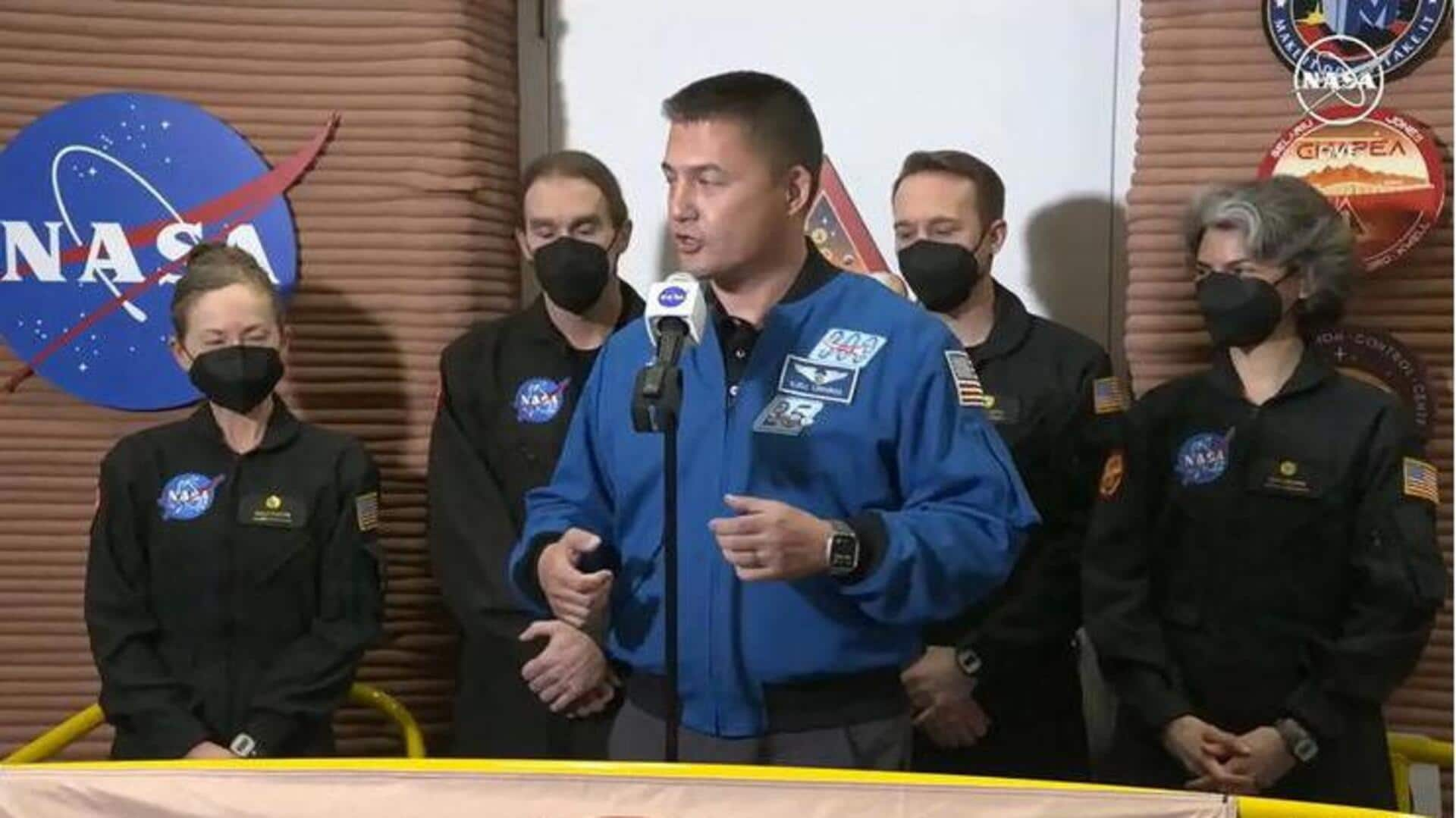
Martian misfits finally return to Earth after year-long simulation
What's the story
Four American scientists have successfully concluded a year-long experiment simulating life on Mars. The team spent 378 days in the NASA-built Mars Dune Alpha, a 160-square-meter structure designed to mimic Martian conditions. Located at the Johnson Space Center in Houston, this 3D-printed habitat is equipped with bedrooms, common areas, a gym, and a vertical farm for growing food.
Simulation details
Mars Dune Alpha: A glimpse into Martian life
The Mars Dune Alpha includes an outdoor area filled with red sand, separated by an airlock for "Marswalks." The team, consisting of Ross Brockwell, Anca Selariu, Nathan Jones, and the team leader Kelly Haston, conducted these walks along with growing vegetables and operating under "additional stressors." These stressors included communication delays with "Earth," isolation, and confinement.
Team's reaction
Emotional exit after year-long Mars simulation
Upon exiting the habitat on Saturday, the four volunteers were visibly emotional. Brockwell expressed their collective sentiment, stating "We can do these things together." He further added, "We can use our senses of wonder and purpose, to achieve peace and prosperity and to unlock knowledge and joy for the benefit of everyone in every part of planet Earth."
Twitter Post
Johnson Space Center confirms their return
LIVE NOW: The first ever CHAPEA crew will exit
— NASA's Johnson Space Center (@NASA_Johnson) July 6, 2024the ground-based Mars simulated habitat after 378 days. https://t.co/vFESM9DUyw
CHAPEA missions
Mars simulation part of larger goal
The simulation was the first in the series of Crew Health and Performance Exploration Analog (CHAPEA), aimed at preparing NASA for future human missions to the Moon and Mars. According to Julie Kramer, NASA's Director of Engineering, the project "gives us an opportunity to learn all these critical things about these complex systems." She added that it will "make going to Mars and back a lot safer." More CHAPEA missions are planned for 2025 and 2027.
Past missions
A similar mission took place in 2015
This simulation follows a similar year-long mission that took place in Hawaii in 2015-2016. Although NASA participated, it did not lead that mission. As part of its Artemis program, the US plans to send humans back to the Moon to learn how to live there long-term. This is in preparation for a trip to Mars planned for sometime in the late 2030s.